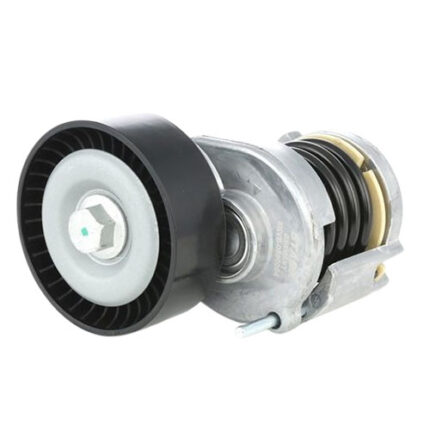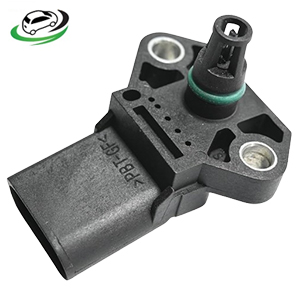Get Manifold AIR Pressure Sensor Audi A2/Audi A6/Avant/Audi A8/S8 quattro/Audi A6 allroad quattro/ VW Bora/Eos/Golf 038906051B
The Manifold Absolute Pressure (MAP) sensor is a vital component of an engine’s fuel management system, providing real-time data to the engine control unit (ECU) about the air pressure inside the intake manifold. This information is crucial for determining the optimal air-fuel mixture, which directly impacts engine performance, fuel efficiency, and emissions. This comprehensive guide will cover the function, components, types, benefits, signs of failure, and maintenance of the MAP sensor in detail.
Function of the Manifold Air Pressure (MAP) Sensor
The MAP sensor measures the absolute pressure inside the intake manifold, a critical parameter for engine operation. It provides the following functions:
- Determining Air Density:
- Pressure Measurement: The MAP sensor measures the pressure in the intake manifold, which varies with engine load and speed. The ECU uses this data to calculate the air density, which, along with air temperature, determines the amount of oxygen available for combustion.
- Calculating Engine Load:
- Load Estimation: The sensor helps the ECU estimate the engine’s load by comparing the manifold pressure to the ambient pressure. A lower manifold pressure indicates a higher load, prompting the ECU to adjust the fuel injection and ignition timing accordingly.
- Optimizing Air-Fuel Mixture:
- Fuel Delivery: Based on the MAP sensor’s readings, the ECU adjusts the fuel injector’s pulse width to ensure the correct amount of fuel is delivered to the engine. This optimization is crucial for achieving the desired air-fuel ratio.
- Controlling Ignition Timing:
- Timing Adjustment: The MAP sensor data helps the ECU determine the optimal ignition timing. Under high load, the ECU may advance the timing to improve performance, while under low load, it may retard the timing to enhance fuel efficiency.
- Boost Pressure Monitoring (in Turbocharged Engines):
- Boost Control: In turbocharged engines, the MAP sensor also monitors boost pressure, ensuring that it stays within safe limits. This data helps prevent engine knocking and damage.
Components of the MAP Sensor
The MAP sensor is a relatively simple but precise device, consisting of the following components:
- Sensor Housing:
- Material: Typically made from durable plastic or metal to withstand engine heat and vibrations.
- Function: Encases the internal components and provides a secure mount to the intake manifold.
- Pressure-Sensitive Element:
- Material: Often a piezoelectric crystal or a silicon chip.
- Function: This element deforms in response to pressure changes, generating an electrical signal proportional to the manifold pressure.
- Electronic Circuitry:
- Components: Includes amplifiers, analog-to-digital converters, and other electronic components.
- Function: Processes the signal from the pressure-sensitive element and converts it into a voltage signal that the ECU can interpret.
- Connector:
- Material: Typically plastic or metal, with sealed pins to prevent moisture ingress.
- Function: Provides an electrical connection to the ECU, transmitting the sensor’s readings.
Types of MAP Sensors
MAP sensors can be categorized into different types based on their design and application:
- Analog MAP Sensor:
- Output: Produces a continuous voltage signal that varies with manifold pressure.
- Application: Common in older vehicles with simpler ECU systems.
- Digital MAP Sensor:
- Output: Provides a digital signal, usually in the form of pulses or a frequency, corresponding to the manifold pressure.
- Application: Used in modern vehicles with advanced ECU systems for more precise control.
- Frequency-Based MAP Sensor:
- Output: Generates a signal with a frequency that varies according to the manifold pressure.
- Application: Some high-performance engines use this type of sensor for more accurate readings.
- Boost-Pressure MAP Sensor:
- Output: Measures both the manifold pressure and the additional pressure in turbocharged or supercharged engines.
- Application: Specifically designed for forced induction engines to monitor boost levels.
Benefits of a Properly Functioning MAP Sensor
A properly functioning MAP sensor offers several key benefits:
- Enhanced Fuel Efficiency:
- Optimal Mixture: By providing accurate pressure readings, the MAP sensor helps the ECU maintain the ideal air-fuel ratio, improving fuel efficiency.
- Improved Engine Performance:
- Power Optimization: The sensor ensures that the engine receives the correct amount of fuel and air under varying conditions, resulting in smoother acceleration and better overall performance.
- Reduced Emissions:
- Cleaner Combustion: With accurate data from the MAP sensor, the ECU can minimize the amount of unburned fuel in the exhaust, leading to lower emissions.
- Prevention of Engine Knock:
- Knock Control: The sensor helps prevent engine knock by ensuring that the ignition timing is correctly adjusted for the current engine load and pressure conditions.
- Extended Engine Life:
- Wear Reduction: By ensuring the engine runs efficiently and under optimal conditions, the MAP sensor helps reduce wear and tear on engine components.
Signs of a Failing MAP Sensor
A failing MAP sensor can lead to various engine problems, and recognizing the signs of failure is crucial for timely repairs:
- Poor Fuel Economy:
- Increased Consumption: A faulty MAP sensor may cause the ECU to miscalculate the air-fuel ratio, leading to increased fuel consumption.
- Engine Hesitation or Stalling:
- Performance Issues: The engine may hesitate during acceleration or stall at idle if the MAP sensor provides incorrect pressure readings.
- Check Engine Light:
- Warning Signal: The ECU may trigger the check engine light if it detects a problem with the MAP sensor or if the sensor’s readings are out of the expected range.
- Rough Idle:
- Unstable Operation: A failing MAP sensor can cause the engine to idle roughly or inconsistently, as the air-fuel mixture may become too rich or too lean.
- Increased Emissions:
- Emissions Test Failure: A malfunctioning MAP sensor can lead to improper combustion, resulting in higher emissions and potential failure of emissions tests.
- Engine Knock:
- Knocking Sounds: Incorrect pressure readings can cause improper ignition timing, leading to engine knock or pinging, which can damage the engine over time.
Maintenance and Replacement
Regular maintenance and timely replacement of the MAP sensor are crucial for maintaining engine performance and efficiency:
- Routine Inspection:
- Visual Check: Regularly inspect the MAP sensor for signs of damage, corrosion, or loose connections. Ensure the wiring harness is intact and properly connected.
- Cleaning:
- Sensor Cleaning: If the MAP sensor is dirty or clogged, carefully clean it using a sensor-safe cleaner. Avoid using harsh chemicals or excessive force, as this can damage the sensor.
- Sensor Testing:
- Voltage Test: Use a multimeter to check the sensor’s output voltage at different engine loads. Compare the readings to the manufacturer’s specifications to determine if the sensor is functioning correctly.
- Replacement Interval:
- Scheduled Replacement: Follow the vehicle manufacturer’s recommended intervals for MAP sensor replacement, especially if the sensor shows signs of wear or failure.
- Professional Diagnosis:
- Expert Evaluation: If the check engine light is on or you notice symptoms of a failing MAP sensor, have a professional mechanic diagnose the issue using an OBD-II scanner. This can pinpoint the exact problem and confirm whether the MAP sensor needs replacement.
- Proper Installation:
- Installation Tips: When replacing the MAP sensor, ensure it is correctly seated and securely connected. Use the appropriate torque specifications to avoid damaging the sensor or the intake manifold.
Follow us on Facebook for more parts.



